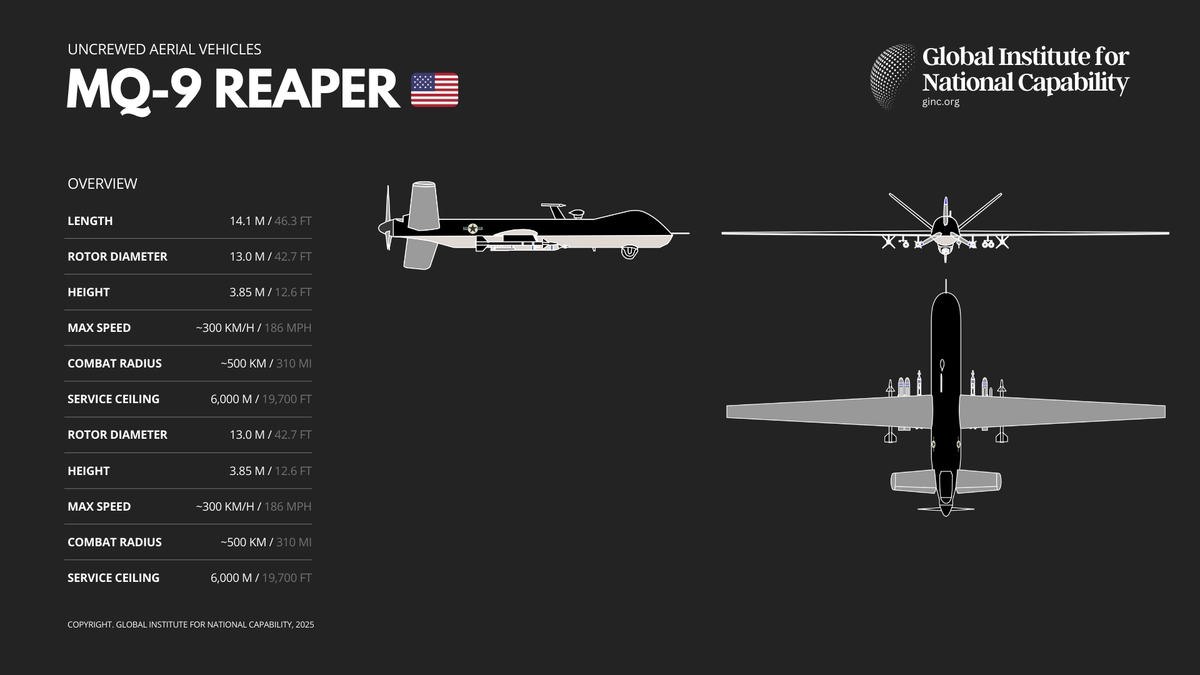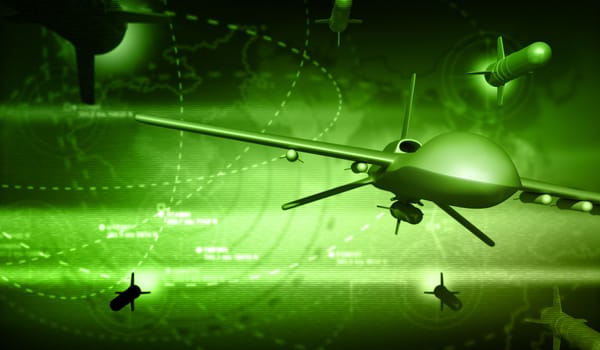MQ-9 Reaper 🇺🇸

The MQ-9 Reaper is the world’s most iconic armed unmanned aerial vehicle (UAV), and a symbol of the shift toward remote and precision warfare. Developed by General Atomics Aeronautical Systems, the Reaper is a hunter-killer drone designed for long-endurance, high-altitude surveillance and precision strike missions. Operated primarily by the U.S. Air Force and allied forces, the MQ-9 has been at the center of modern counterterrorism and intelligence operations for nearly two decades.
First deployed in 2007, the MQ-9 was an evolution of the earlier MQ-1 Predator but with vastly enhanced capabilities. Unlike its predecessor, which was primarily a reconnaissance platform with limited strike capacity, the MQ-9 was purpose-built as a multi-mission UAV that could loiter for hours, strike with precision, and relay real-time intelligence across the globe — all without putting a pilot in harm’s way.
With a wingspan of 20 meters (66 feet) and powered by a Honeywell TPE331 turboprop engine, the Reaper can cruise at up to 300 mph (482 km/h) and reach altitudes of 50,000 feet, staying airborne for up to 27 hours depending on payload. This endurance makes it ideal for persistent ISR (intelligence, surveillance, reconnaissance) operations over wide areas.
The MQ-9’s armament includes:
- AGM-114 Hellfire missiles for precision anti-personnel or anti-vehicle strikes,
- GBU-12 Paveway II or GBU-38 JDAM laser- or GPS-guided bombs for larger targets,
- Up to 3,750 pounds of ordnance carried on hardpoints under the wings.
Its payload also includes EO/IR sensors, synthetic aperture radar (SAR), and signals intelligence (SIGINT) packages, making it as much an intelligence collector as a strike platform. Operators, typically located in the U.S. or allied countries, remotely pilot the MQ-9 using satellite communications and advanced ground control stations.
What makes the Reaper particularly valuable to military strategy is its cost-efficiency, persistence, and precision. It enables nations to maintain constant overwatch of critical regions and strike targets with minimal collateral damage. Its use has become central in counterterrorism, counterinsurgency, and border security operations from Afghanistan and Iraq to Africa and the Indo-Pacific.
However, the Reaper’s use has also raised strategic and ethical debates. The expansion of targeted killing campaigns, concerns over civilian casualties, and the psychological effects of “remote war” have sparked calls for clearer rules of engagement and transparency.
As adversaries advance in anti-drone technology and electronic warfare, the MQ-9’s survivability in contested airspace is being questioned. In response, the U.S. is exploring next-generation unmanned systems and autonomous swarming capabilities under programs like Skyborg and the Next-Generation ISR/Strike platform.
Still, the MQ-9 Reaper remains a cornerstone of modern airpower, blending endurance, precision, and situational awareness in a single unmanned system. As warfare continues to evolve, the Reaper represents not just a weapon, but a new way of waging war — persistent, remote, and surgical.




